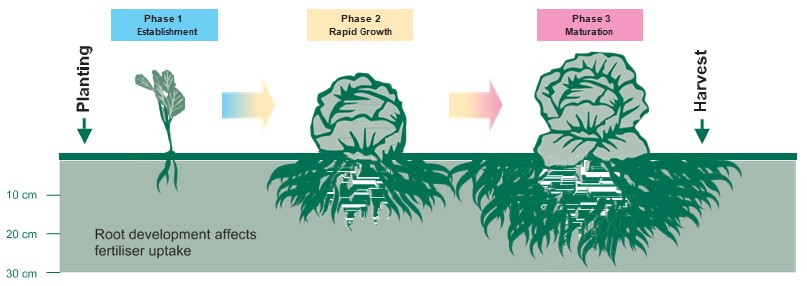Introduction
The research which led to development of the 3Phase fertiliser program was started in response to the need to phase out poultry manure because of community concerns with its use in near-metropolitan areas.
Although a useful soil amendment and source of nutrients, poultry manure stockpiles provided a breeding ground for stable flies and created odour problems.
This 3Phase fertiliser program is based on four years of research on cabbage grown on the sandy soils of the Swan Coastal Plain with sprinkler irrigation. It gave the highest yields and best quality throughout the year, is practical to apply and economical with labour.
The sandy soils of the coastal plain provide a free-draining, easily worked growing medium. Nutrients in the soil solution are freely available for plant uptake. Some nutrients are highly mobile and easily lost through leaching. Nitrate-nitrogen is particularly susceptible to leaching and is a major groundwater pollution concern. Pay careful attention to fertiliser application to:
- maximise the efficiency of fertiliser use
- minimise loss through leaching
- maximise return on the dollars spent on fertiliser.
3Phase fertiliser program is based on research on some of the most infertile sandy soils in the region and developed cost-effective strategies for maximising yield in a ‘worst case’ situation.
Fertiliser and cost savings are achieved by making informed choices about fertiliser type, application rates methods and timing — matching fertiliser application to crop demand.
To achieve this, the crop is considered in three phases: establishment, rapid growth and maturation (see Figure 1).

Different fertiliser strategies are used to optimise growth in each phase.
It takes about two weeks in summer and four weeks in winter for the root zone of a cabbage crop to become extensive enough to intercept nutrients placed everywhere on the soil surface. By maturity, roots can access water and nutrients from the top 20–30cm of soil.
